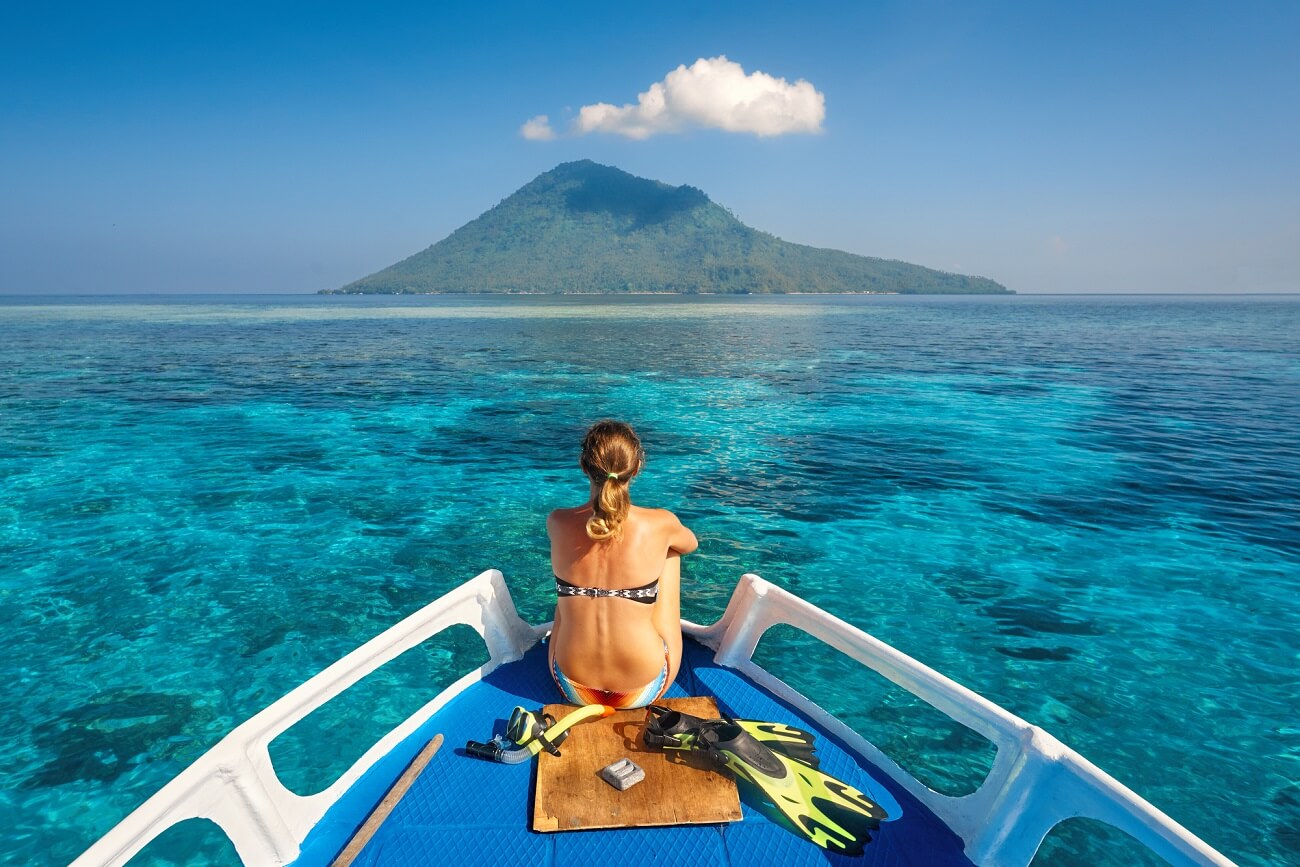

Gunung Leuser National Park ( Gunung Leuser National Park ) is one of the five oldest national parks in Indonesia and is a UNESCO World Heritage Site. This amazing natural site is located on the border of the two westernmost Indonesian provinces: North Sumatra and Aceh . Covering a vast area of about 8,000 square kilometers, the National Park is famous for its amazing biodiversity and is home to a large number of species that are endangered or endemic to the region.
In this article, we will tell you about the wonders of Gunung Leuser National Park , its unique inhabitants, and why preserving this ecological treasure is a priority for conservation organizations.

Depositphotos
Who can you see in the park?
Gunung Leuser National Park covers a wide range of terrain, from lowland rainforests to high mountain peaks. The park takes its name from one of its prominent peaks, Mount Leuser , which rises 3,119 metres above sea level. The varied terrain provides a rich tapestry of ecosystems, creating ideal conditions for both plant and animal life to thrive.
Thus, there are about 4,000 species of flora on the territory of the park, including the parasitic plant species Rafflessia , known for its huge and unusual flowers, which sometimes reach a diameter of more than a meter and weigh more than 10 kilograms.
In addition, it is home to about 380 species of birds and about 65% of Sumatra's 129 species of both large and small mammals.
The park is also home to a number of endangered animals, including:
- Sumatran Orangutans are charismatic apes whose numbers are rapidly declining. Gunung Leuser National Park is one of the last habitats for these rare creatures.
- The Sumatran tiger, of which there are only a few hundred left in the wild, is of paramount importance for its conservation.
- The Sumatran rhinoceros, one of the world's rarest mammals, can still be found in the park, although its numbers are extremely small.
- The Sumatran elephant is another endangered species. These gentle giants play a vital role in maintaining the park's ecosystem.
The park is crossed by numerous rivers, streams and waterfalls, providing its inhabitants with essential water sources. Freshwater ecosystems support a variety of aquatic fauna, including fish and amphibians.
Conservation efforts in Gunung Leuser National Park are driven by the desire to preserve its exceptional biodiversity. Several organizations and institutions work tirelessly to preserve this natural wonder. They are involved in various initiatives such as anti-poaching patrols and habitat restoration.
In addition, there are several wildlife rehabilitation centers in the region, such as Orangutan Information Centre . These centres are dedicated to rescuing and rehabilitating injured and orphaned wild animals with the aim of releasing them back into the wild.

Depositphotos
How to get to Gunung Leuser National Park
Visitors can officially enter the park through several "doors", including:
- Bukit Lawang ,
- Batu Katak ,
- Batu Rongring ,
- Tangkahan ,
- Simolap-Marike ,
- Pamah Similir .
The main gate with the most developed tourist infrastructure in the Gunung Leuser National Park area is Bukit Lawang . In the vicinity of Bukit Lavanga offers dozens of accommodation options with various types of services. Guests have access to restaurants, cafes, supermarkets, markets, a medical service center, a tourist information center and banking institutions.
If you decide to start exploring the region's stunning wildlife from Bukit Lavanga , you will not be short of guest houses. For example:
- Orangutan Bungalow - a guest house located almost at the entrance to the jungle of Gunung Leuser National Park . Quiet atmosphere, there is a restaurant and a high probability of meeting orangutans walking nearby - from $ 15;
- Green Travelodge - colorful bungalows with a thatched roof, lots of greenery, helpful staff. There is a river nearby, rafting, jungle treks and other activities can be organized - from $20;
- Ecolodge - offers several accommodation options in cottages and bungalows. There is a restaurant built from natural and environmentally friendly bamboo and clay with an emphasis on authentic Indonesian cuisine - from $ 130 with breakfast.
How to get there : Bukit Lawang is located in the province of North Sumatra, approximately 95 kilometers from the city of Medan, which has its own international airport - Kualanamu International Airport . After landing at the airport and completing the necessary customs procedures, take the ALS bus to the town of Binjai , where you should change to a bus to Bukit Lavanga . Travel time will be approximately 3-4 hours.

Depositphotos
Things to do in the park
Each visitor can choose adventure packages according to their interests and physical capabilities: from an hour-long walk to a nine-day tour accompanied by professional guides. Guests of the park have access to walking routes, viewing platforms, accommodation, cafes and other tourist facilities.
In addition to exploring the wild nature, active travelers can go rafting, swimming, exploring caves, taking elephant treks, traveling to villages to visit artisans, rice fields, plantations, learn the basics of fishing, learn about local culture and buy traditional products, supporting the local economy.

Depositphotos
Challenges and threats
Despite being a global conservation priority, Gunung Leuser National Park faces numerous challenges and threats.
For example, poaching and illegal logging remain serious problems in the park, leading to habitat loss and depletion of wildlife. The expansion of palm oil plantations in adjacent areas also poses a threat to the integrity of the park.
In addition, the Leuser ecosystem is showing early signs of reduced water recharge and depletion of water resources.
Therefore, responsible ecotourism is a key component of nature conservation activities in the park. In order not to disturb the fragile ecosystem of the region, it is forbidden to make noise, leave garbage, or disturb the plants and inhabitants of the park.

Depositphotos
Recommendations and tips
Guides can provide the necessary equipment, such as trekking boots, tents, sleeping bags, first aid kits and other necessary standard equipment. But when going on a long hike, it would be a good idea to have your own, most comfortable trekking gear, waterproof clothing and shoes.

Depositphotos
There are medical facilities in the region, but most are not up to the standards most Western tourists are accustomed to . It is therefore advisable to carry a first aid kit to provide any necessary assistance. In addition, the region occasionally experiences cases of malaria, dengue fever and other mosquito-borne diseases, so insect repellent is essential .
More articles
- Rains in Bali: pros and cons of the wet season
- Hotels of Ayana complex in Bali
- Gunung Batur: how to get to the main volcano in Bali
- Likupang on Sulawesi Island in Indonesia
- Mauritius Attractions: 27 Best Places to Visit
- Bali for Two: 24 Romantic Getaway Ideas
- Top 20 Bali Tours: Itineraries, Offers, and Prices
- Bali's Best Beach Clubs - 13 Luxury Oases
- Tips for tourists in Indonesia - how to avoid spoiled holidays
- Yoga Studios in Bali - where to catch Zen on the Island of the Gods



